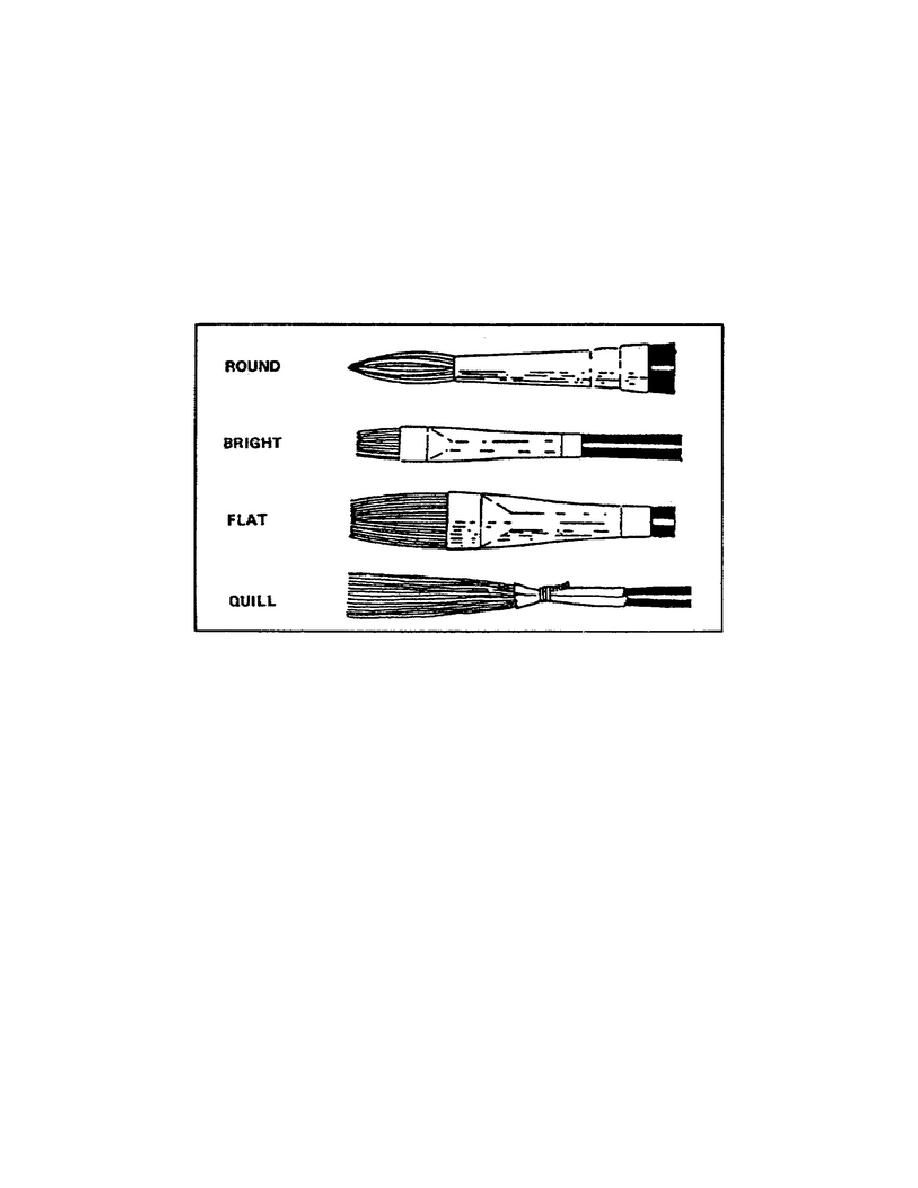
are preparing a flip chart, place a piece of scrap paper behind the area
you are lettering to prevent the marker from bleeding through to the next
page on the chart.
d. Brush Lettering. This is another flexible form of lettering that
requires practice to obtain and maintain proficiency. As an illustrator,
you can use brush lettering to produce letters ranging from 1/4-inch to
10 feet or more in size. All brushes have three major components: (1)
hairs, (2) ferrule, and (3) handle.
There are three different shaped
brushes you use for lettering: (1) round, (2) bright, and (3) flat
(figure 1-65).
Figure 1-65.
Lettering brushes
(1) Round brush. The hairs of this brush come to either a blunt
or sharp point. The type of tip and the pressure exerted on the brush
while applying the paint determines the different types of lettering for
which you may use the brush.
To use this brush to produce Gothic
lettering, it must have a blunt, round point and you must apply even
pressure while lettering. If this brush has a round tip, and you vary
the pressure, you can create cursive lettering.
When using this brush to produce lettering, you can control the size of
the line by controlling the amount of pressure applied on the brush. The
more pressure you apply, the wider or broader the lines; conversely, the
less pressure you apply, the finer the lines. A high quality round brush
presents a fullness of the hairs when wet; whereas a poor quality brush
looks concave at the sides and ragged.
1-71
SS0530


 Previous Page
Previous Page
